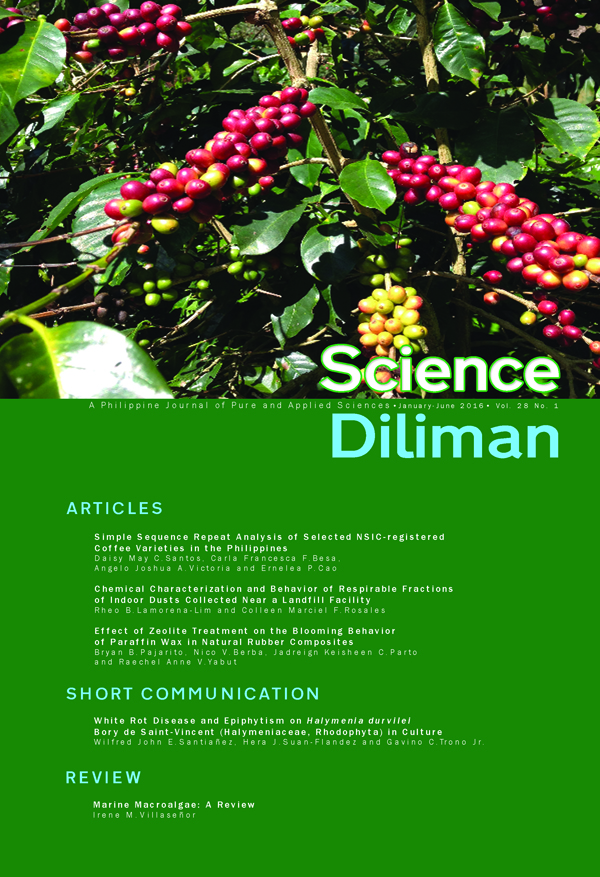Chemical Characterization and Behavior of Respirable Fractions of Indoor Dusts Collected Near a Landfill Facility
Abstract
The study aims to determine the inorganic and organic phases in airborne particulate matter (PM) collected near a landf ill facility. The establishments within the vicinity of the landfill considered in the study were a junk shop, a school, and a money changer shop. From the elemental analysis using inductively-coupled plasma mass spectrometry (ICP-MS), lead and cadmium were discovered to be more abundant in the total suspended particulate (TSP) fraction, whereas copper was more abundant in the smaller PM2.5. Manganese, arsenic, strontium, cadmium, and lead were more abundant in the PM10 fraction than in PM2.5. The results of the chemical characterization were compiled and evaluated in a geochemical modelling code (PHREEQC) to determine the potential speciation of these chemical constituents. Solution complexes of As, Pb, Cd and phthalates, and metal species, such as H2AsO3- , Cd2OH3+, Pb(OH)3-, were predicted to form by the PHREEQC simulation runs once the endmember components interact with water. The results contribute to the background information on the potential impacts from exposure to airborne PM at workplaces around landfill facilities. Moreover, the data gathered provide a baseline for the chemical characterization and behavior of chemical constituents of PM possibly present in this specific type of environment.
Keywords: Airborne particulate matter, landfill facility, indoor air quality, solution complexes, PHREEQC speciation, respirable fractions



